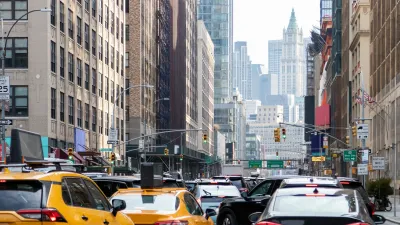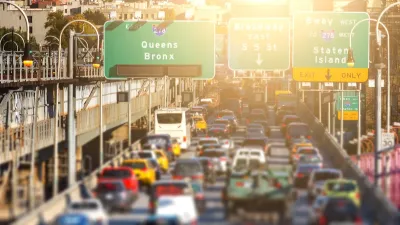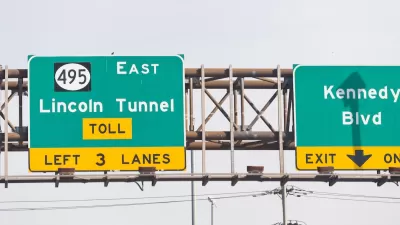Air pollution and traffic are choking China's largest cities: a recent conference reveals that officials are looking to solve these twin transportation problems with economics.
Drawing on the experiences of Singapore and European cities, Chinese officials are considering ways to implement congestion pricing to reduce air pollution and traffic jams. As an attendee of a conference called "International Forum on Economic Policies for Traffic Congestion and Tailpipe Emissions," Charles Komanoff of Streetsblog explains that officials were eager to learn about the range of congestion pricing systems that exist, along with their technical and political requirements.
"The discussion was grounded in the experiences of Europe and Singapore. What especially resonated with the Chinese delegates was London’s provision of many new bus lines before the toll scheme was rolled out; Stockholm’s referendum win after congestion pricing had been proven on a trial basis; Milan’s transition from a pollution-based to a congestion-based charge, as vehicle turnover moved the mix from old, polluting tailpipes to cleaner ones, and traffic efficiency began to have equal priority with air quality; and Singapore’s “dynamic” pricing adjusting the toll level to the gridlock level. If there was one strong single lesson, it was that both the political sell and the toll design must be geared to each city’s circumstances," writes Komanoff.
FULL STORY: Congestion Charging on the Horizon for China’s Cities

Study: Maui’s Plan to Convert Vacation Rentals to Long-Term Housing Could Cause Nearly $1 Billion Economic Loss
The plan would reduce visitor accommodation by 25,% resulting in 1,900 jobs lost.

North Texas Transit Leaders Tout Benefits of TOD for Growing Region
At a summit focused on transit-oriented development, policymakers discussed how North Texas’ expanded light rail system can serve as a tool for economic growth.

Why Should We Subsidize Public Transportation?
Many public transit agencies face financial stress due to rising costs, declining fare revenue, and declining subsidies. Transit advocates must provide a strong business case for increasing public transit funding.

How to Make US Trains Faster
Changes to boarding platforms and a switch to electric trains could improve U.S. passenger rail service without the added cost of high-speed rail.

Columbia’s Revitalized ‘Loop’ Is a Hub for Local Entrepreneurs
A focus on small businesses is helping a commercial corridor in Columbia, Missouri thrive.

Invasive Insect Threatens Minnesota’s Ash Forests
The Emerald Ash Borer is a rapidly spreading invasive pest threatening Minnesota’s ash trees, and homeowners are encouraged to plant diverse replacement species, avoid moving ash firewood, and monitor for signs of infestation.
Urban Design for Planners 1: Software Tools
This six-course series explores essential urban design concepts using open source software and equips planners with the tools they need to participate fully in the urban design process.
Planning for Universal Design
Learn the tools for implementing Universal Design in planning regulations.
City of Santa Clarita
Ascent Environmental
Institute for Housing and Urban Development Studies (IHS)
City of Grandview
Harvard GSD Executive Education
Toledo-Lucas County Plan Commissions
Salt Lake City
NYU Wagner Graduate School of Public Service





























